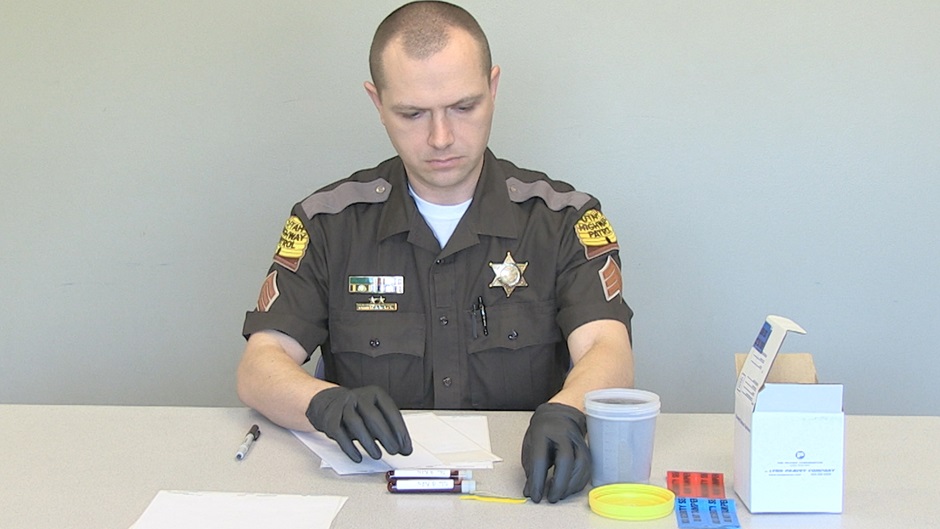
Police Officers in Arizona can draw your blood .
It was about 6:30 on a Friday night in January when Phoenix Police Detective Kemp Layden pulled over a white Jeep Cherokee that was speeding and weaving in and out of its lane. The 47-year-old driver spoke slowly, his eyes were red and watery, and his pupils were dilated. The inside of the Jeep reeked of marijuana, and the driver failed a field sobriety test, which includes walking heel-to-toe and standing on one leg.
He told the officer he had smoked marijuana a few hours earlier and taken a prescription sedative the night before, police say. The man passed a portable breath test — he wasn’t drunk. But Layden suspected he was impaired by drugs, which the test can’t detect.
A DUI police van equipped with a special chair and table for blood testing pulled up. The man refused to submit to a blood draw. So Layden grabbed his laptop and filled out an electronic warrant, or e-warrant, which was transmitted directly to a judge.
Within 10 minutes, Layden had a search warrant. Another officer drew the man’s blood. A lab report later confirmed he had active THC and a sedative in his blood.
More communities are training police officers to draw drivers’ blood at police stations or in vans.
Police photographed and fingerprinted the driver and issued him a citation for DUI. It took 79 minutes from the time he was stopped until he was picked up by an Uber.
Law enforcement phlebotomists are police officers or personnel with specialized training to draw blood for investigative purposes, including DUI/DWI investigations, DNA testing, communicable disease testing, and other reasons. The Arizona Officer Phlebotomy Program started in 1995 to streamline the search warrant program. In 2000, Cathee Tankersley, the Phoenix College Phlebotomy Director, developed a new course specifically designed for law enforcement.
Arizona statutes allow for breath, blood, or urine testing at the choice of the officer. Some municipalities like Phoenix, Gilbert, Mesa, and Chandler primarily use blood testing. Most other jurisdictions permit both breath and blood tests. Agencies moved from breath to blood testing due to litigation (such as ADAMS/COBRA and source code issues), fewer perceived legal challenges, judge/jury perception of reliability, and the officer phlebotomy program.
When the Officer Phlebotomy Program started in 1995, Arizona had a 20% refusal rate. By 2007, this rate had dropped to 8.56% statewide (5.89% at DPS and 4.07% at Phoenix PD). In 2008, DPS’ refusal rate was 6.3% and Phoenix PD’s was 3.81%. The most recent data from 2009 show that DPS’ refusal rate rose slightly to 6.4% and Phoenix PD’s to 5%. Even when suspects refuse to have their blood drawn, evidence is obtained through a search warrant.
Refusal rates have dropped largely due to increased public awareness. The public knows that refusing a blood draw when under arrest for DUI results in a one-year driver’s license suspension. A zero-tolerance approach by law enforcement, 24-hour availability of judges to process warrants, and better interagency cooperation have also contributed to this decrease.
Training
Arizona has developed a concentrated one-week course to train law enforcement officers in phlebotomy. Participants must complete pre-class homework online. The course focuses on procedures relevant to law enforcement. Classes are taught in 8-hour days and follow OSHA guidelines.
Students spend 20-30 hours in a clinical setting, completing more than 50 successful venipunctures. They must pass a practical and written final examination, meeting all prescribed competencies. Officers who complete the course must take a refresher training course every two years.
The Governor’s Office of Highway Safety (GOHS) funds Law Enforcement Phlebotomy classes through the following colleges: Phoenix College, Pima Community College, Gateway College, Eastern Arizona College, and Northland Pioneer College.
